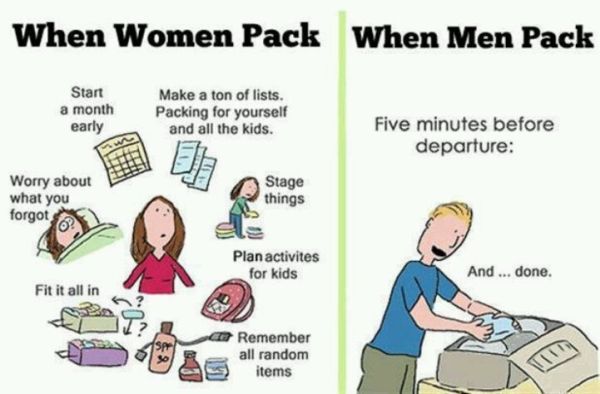

“Even their dress is designed for this,” Gray elaborates.


Men are drawn to careers with uniforms, we are told, because uniforms denote competence. The rest of the book is spent hammering this idea home. When a man hurts, he wants to locate the problem and resolve it. In generous terms, women are articulators, while men are doers: When a woman hurts, she wants to open up about it. Women seek to share, while men seek to fix. But it makes sense in terms of Gray’s narrative objective. It’s not super clear why she would be so mad at him for not knowing about her pain. The key to overcoming it is awareness itself: cognizance of this fact, so that we might maneuver around it.

(Gray submits this as a framing device, but part of me thinks he sort of buys into it wholesale and was low-key hoping it would take off.) This sets up the crux of Gray’s understanding of The Two Genders: There is a fundamental language barrier between them, rooted in immutable (space) identities. Things went left, however, when the Martians and Venusians decided to go to Earth (on the aforementioned Spaceships for Him™) and forgot about their differences because they inhaled Earth’s atmosphere, and oxygen is genderqueer juice, I guess. The men and women got along fine because, as Gray (PhD!) repeatedly stresses, “They understood their differences.” The men decided to invent space travel just to disrupt the women’s lifestyle and go chill with them. There’s actual lore: Men on Mars were going about their Martian lives, building and achieving things, when, one day, they caught a glimpse of the women on Venus, who were braiding their hair or whatever. But let’s start with the book itself, eh? The first thing you need to understand is that, far from a mere metaphor, John Gray PhD takes the whole “different planets” bit very seriously.


 0 kommentar(er)
0 kommentar(er)
